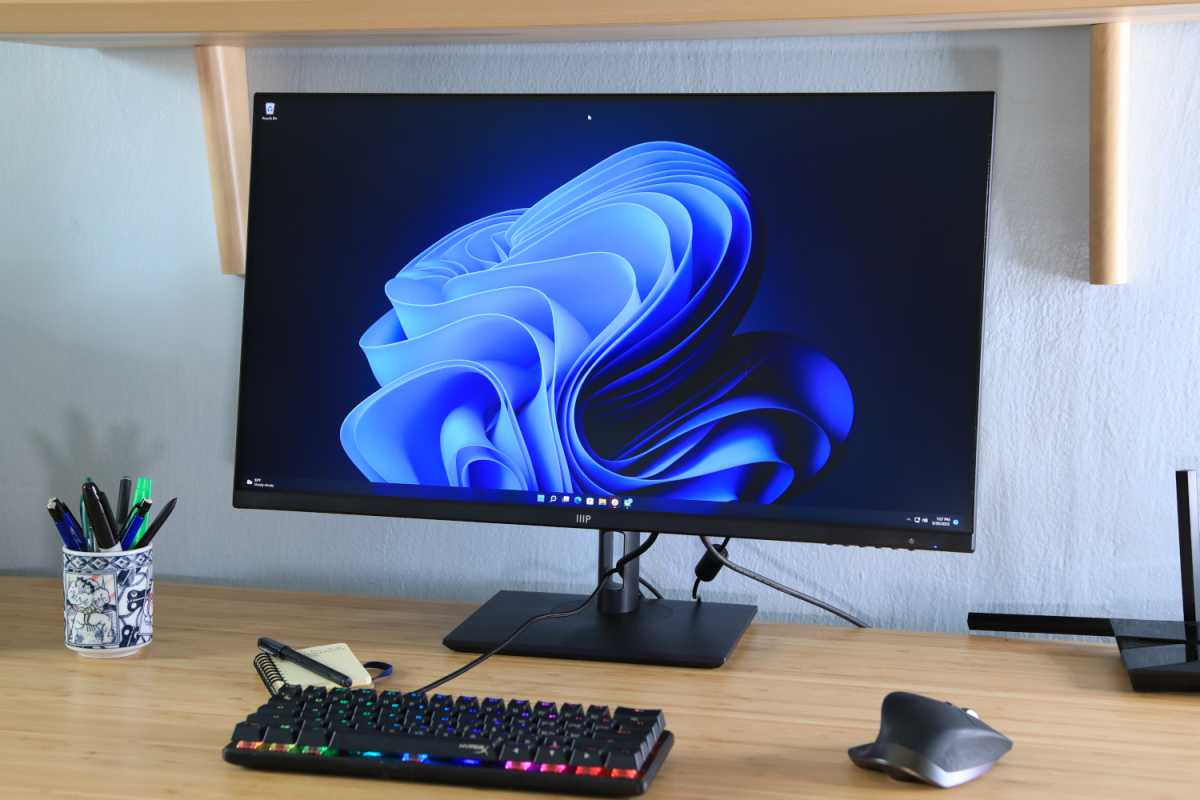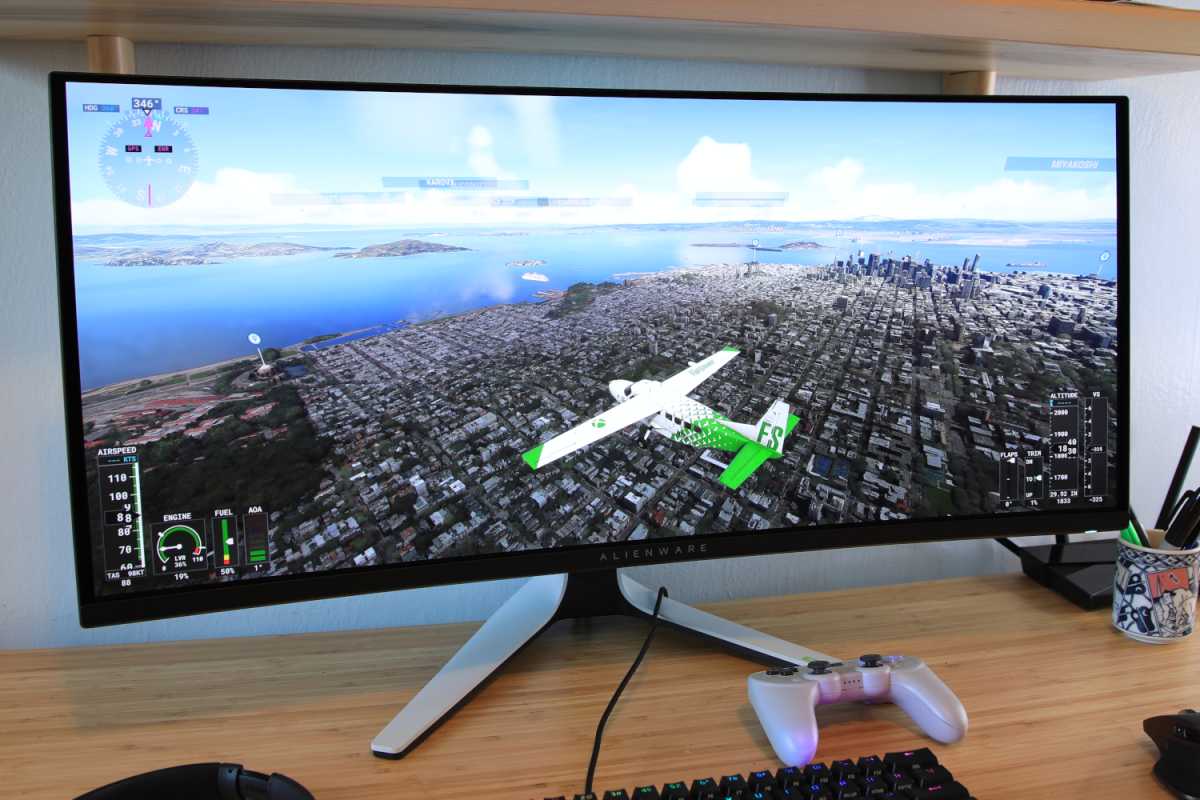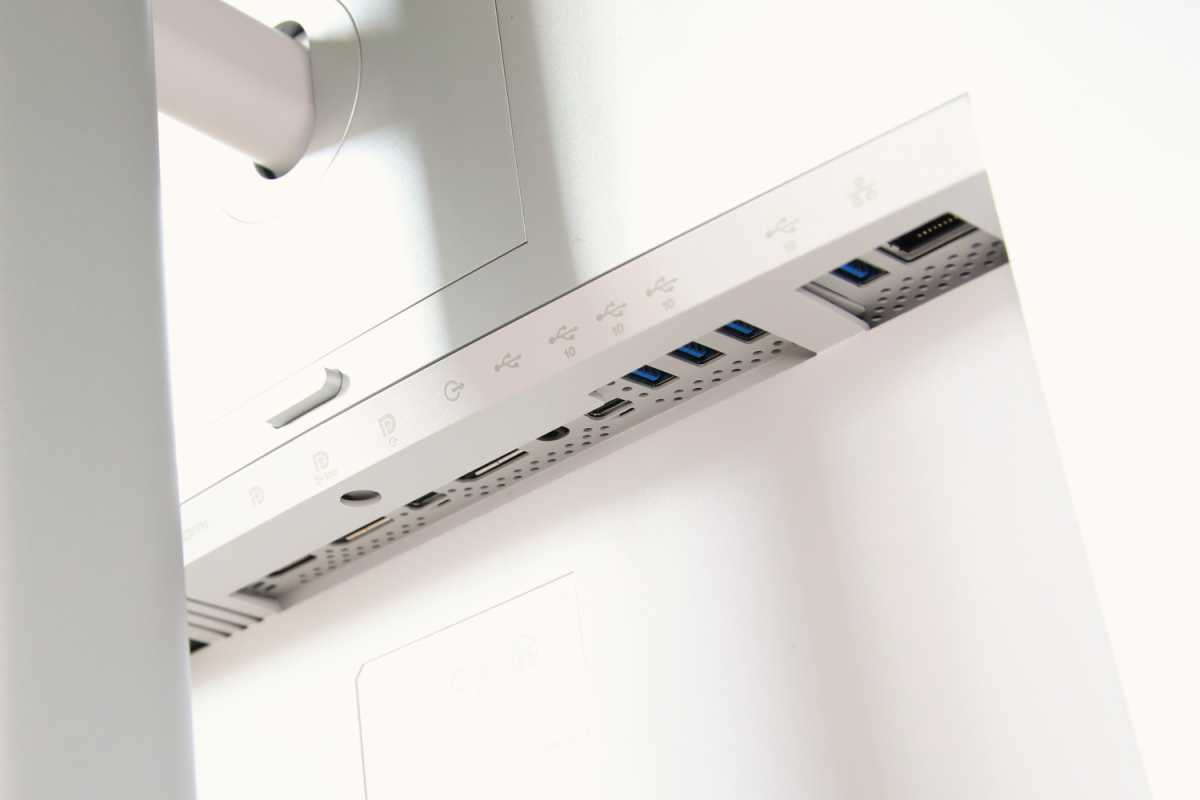Your computer monitor is easily among the most important peripherals on your desk. You spend all day staring at it, after all. Yet most people don’t spring to upgrade it until their old monitor is on death’s door. That’s understandable — monitors aren’t as exciting as a new, ray-tracing capable video card or sixteen-core CPU — but, if your monitor is more than five years old, it’s time to give an upgrade some serious thought. You could be missing out on a massive boost in image quality.
The eyes have it
The best reason to upgrade your monitor is the most obvious: it will look much, much better.
Resolution is the most noticeable improvement. Asus introduced the first 4K monitor in 2013 at a jaw-dropping $5,000 price tag. Since then, pricing has slowly come down, making it possible to snag a good 4K monitor, like the Dell S2721QS, for about $300 to $400 when you find a nice sale.
The improved resolution makes everything from the Windows desktop to 3D games look crisp and fresh. Small fonts are easy to read and, thanks to improvements in Windows’ scaling options, it’s now easy to find a comfortable UI scale even on high-resolution displays.
And there’s more to it than 4K. The general increase in resolution has slashed the price of monitors with 2,560 x 1,440 resolution, which are now widely available starting around $250. This is a great resolution for a 27-inch monitor and ideal if you want to snag other modern features, like a high refresh rate or USB-C (which I’ll explain soon) on a modest budget.

Matt Smith
There’s also a whole new category of ultrawide monitors, most of which have 3,440 x 1,440 resolution (which is about equal in sharpness to a widescreen at 2,560 x 1,440). The added display space is perfect for productivity and looks fantastic in modern 3D games.
Brightness, contrast, and color performance have all improved, as well. I’ve seen this improvement first-hand as I’ve reviewed and tested PC and laptop displays over the past decade.
A typical monitor sold a decade ago would be lucky to cover the entire sRGB color gamut, leaving them with a relatively narrow color space to work with. Today, many monitors handle not just sRGB but also a wide range of DCI-P3 and AdobeRGB. Modern monitors simply display more colors, providing a vibrant and alluring visual presentation.
Colors are more accurate, too, with even budget monitors hitting out-of-box color accuracy scores once possible only in high-end monitors for professional use. This is a major change from monitors sold five to 10 years ago, which were often very inaccurate – especially on the lower end of the price spectrum.
Today, monitors like the Asus ProArt PA247CV and Viewsonic VG2455 deliver a bright, colorful picture for $250 or less. Samsung’s S33A, often sold for just $170 (or less!), is an impressive upgrade over similarly priced monitors sold just five years ago.
Mini-LED and OLED improve contrast and make HDR possible
Are you willing to spend more than $1,000 on a monitor? If so, there’s more good news in store. Today’s best monitors offer an HDR experience that lends an unparalleled sense of depth and immersion.
Mini-LED monitors, such as the Viewsonic XG321UG and Asus ROG Swift PG32UQX, are the leading edge of this trend. They replace the simple LED backlight used by older monitors with an array of LEDs grouped into zones that can turn on and off independently. This delivers a big boost to contrast and powers truly eye-searing highlights. HDR-capable movies and games look fantastic.

Matt Smith/IDG
There’s also a handful of OLED monitors, most notably the Alienware AW3423DW. OLED monitors are not as bright as Mini-LED but can achieve an essentially perfect black level and don’t show blooming around objects.
These monitors are expensive, but there’s reason to think pricing will be reduced in the near future. Numerous monitor brands have announced Mini-LED options for mid to late-2022, and several OLED monitors using the same panel found in the Alienware AW3423DW are slated to arrive this year.
Refresh rates, adaptive sync, motion clarity
Odds are your old LCD monitor has a 60Hz refresh rate. The first G-Sync compatible 144Hz monitors arrived in 2014, but the trend didn’t hit the mainstream until several years later.
Refresh rate is most often sold as a feature for gamers, but it’s a nice perk for everyday use. A high refresh rate provides a more responsive feel while scrolling through web pages and even while typing in a Word document. It’s not essential, but certainly enjoyable. Multitaskers who scroll through documents and flick between windows at high speeds will find a high refresh rate appealing.
Many modern monitors are still 60Hz, of course, but the tax attached to a 144Hz display has become so slim that it’s almost disappeared. Monitors with a 144Hz refresh rate are now sold for as little as $200, with many excellent 1080p options in the $250 to $300 price range. If your budget allows, you can step up to a variety of enhanced refresh rate and resolution options. 4K is available up to 144Hz, 1440p can be enjoyed at up to 240Hz, and some 1080p monitors hit 360Hz.
Adaptive sync is widespread. AMD FreeSync and Nvidia G-Sync are now compatible with the VESA Adaptive Sync standard, which has broadened its availability. There’s still caveats here — monitors with an Nvidia G-Sync module do still exist, and both AMD and G-Sync still have several different tiers of adaptive sync support. But, in general, it’s very nearly a standard feature on a wide variety of monitors — even those sold under $200 support it.
And then there’s an upgrade that everyone can appreciate: motion clarity. Pixels on older flat panel LCD screens were rather lazy. Oh, sure, they’d change eventually when asked – but it could take a dozen milliseconds or more. This is why LCD screens show ghosting trails behind objects in motion. The pixels on newer screens are more eager, with the best having black-to-white pixel response times of around a half-dozen milliseconds. That’s a big upgrade.
In summary, motion is just better on modern monitors. A new monitor will look smooth and crisp in situations where an older monitor is hesitant and blurry.
USB-C is awesome
Perhaps it’s no surprise modern monitors look better than old monitors. That’s progress, right? But some new monitors have an upgrade most people don’t think about: the display connection.
USB-C, now common to a variety of smartphones, tablets, and laptops, can also be found on some monitors. It can handle video over DisplayPort Alternate Mode and provide power to a connected device through Power Delivery. A few monitors have a built-in USB-C hub that can extend connectivity to additional devices, add Ethernet, and even handle video-out.

Matt Smith / Foundry
This is awesome if you have a laptop with USB-C. Instead of connecting the laptop to power, the monitor, and other accessories individually, you’ll connect everything to the monitor and then connect the laptop to the monitor over USB-C. You’ll have just one cord between your laptop and monitor, reducing clutter and eliminating the hassle of connecting several cords when you want to dock your laptop on your desk.
USB-C connectivity remains somewhat uncommon, but entry-level models like the Viewsonic VG2455, Samsung M5, and Dell S2422HZ start around $250. Monitors with broader connectivity, like the Dell P2723QE, are available for around $500. This is more expensive than a monitor without USB-C but pricing is similar to buying a monitor and an external USB-C dock individually.
The time to upgrade is now
Ready to make an upgrade?
It’s a good time to buy. While the pressure of chip shortages and inflation have heavily influenced most electronics, monitors are somewhat insulated. After a spike in demand for monitors in 2020, interest faded back to normal, leaving most retailers with plenty of stock. This is especially true of mainstream, mass-market monitors sold at affordable prices.
Pay particular attention to the late summer and fall shopping season. Monitors see big discounts during sales as retailers clear out older inventory. Discounts of $100 to $200 are common. Don’t shy away from a deal on last year’s best monitor, either. Monitors have improved over the years, but the gains from year to year are often insignificant.
Remember, the improvements in computer monitors have come to all price points. Even PC enthusiasts don’t need to spend more than a few hundred dollars to get a great monitor – though exceptionally awesome Mini-LED and OLED models are available if you have the money to spend.




